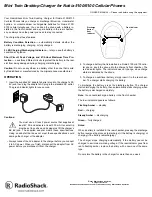
TD 92989EN
15 October 2014 / Ver. B
Installation Guide
IP-DECT Base Station & IP-DECT Gateway
25
Figure 15. Mounting of the IPBS.
3.3
Power the Base Station
The base station is powered the following ways:
• Power over Ethernet (only IPBS).
• Power over Express Powering Pairs (EPP) and data pairs (only BS3x0 and DB1)
• By a local power supply.
NOTE: Do not power the base station using both power supplies. Parallel powering will
not harm the base station but it can disturb the signalling.
3.3.1
Power the IPBS over Ethernet
The IPBS supports Power over Ethernet, IEEE 802.3af, class 2. The power source will
allocate 7W to the IPBS. This must be regarded when planning the powering of the IPBSs
so that the power limit of the PoE power source is not exceeded.
The PoE standard supports two ways of feeding the power:
1
Power over the Rx/Tx data pairs.
2
Power over the spare cable pairs.
Both power feed methods are supported in the IPBS, it is also insensitive to change of the
polarity.
3.3.2
Power the BS3x0 and DB1 over Express Powering Pair (EPP) and data pairs
When a base station is powered remotely via the IPBL, the maximum length between the
base station and the IPBL depends on the supply voltage, the number of twisted pairs used
and the wire size. The length of the cable should never exceed "data-limited" length of
the cable, see
Appendix A.
RFP Power Consumption
on page 35.
3.3.3
Power the Base Station with a Local Power Supply
Powering the base station with a local power supply can be done using the second data/
power inlet on the base station. The base station can be powered individually by an AC-
adapter. The AC-adapter is provided with an 8-pin RJ45 plug that can be plugged into the
Power Supply
jack. For specification see
2.6
AC-adapter
on page 17.












































